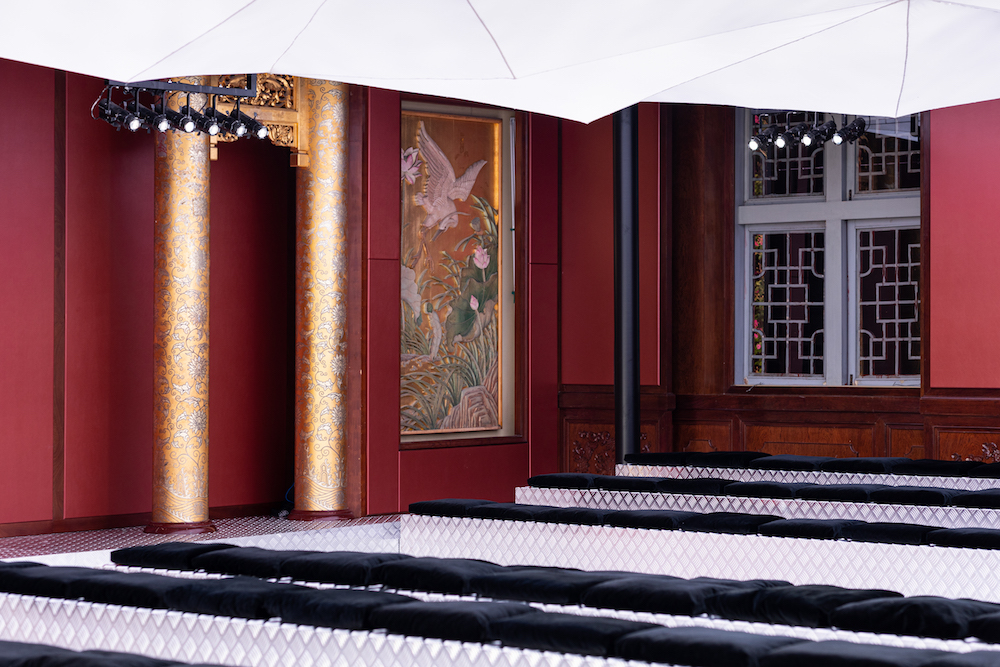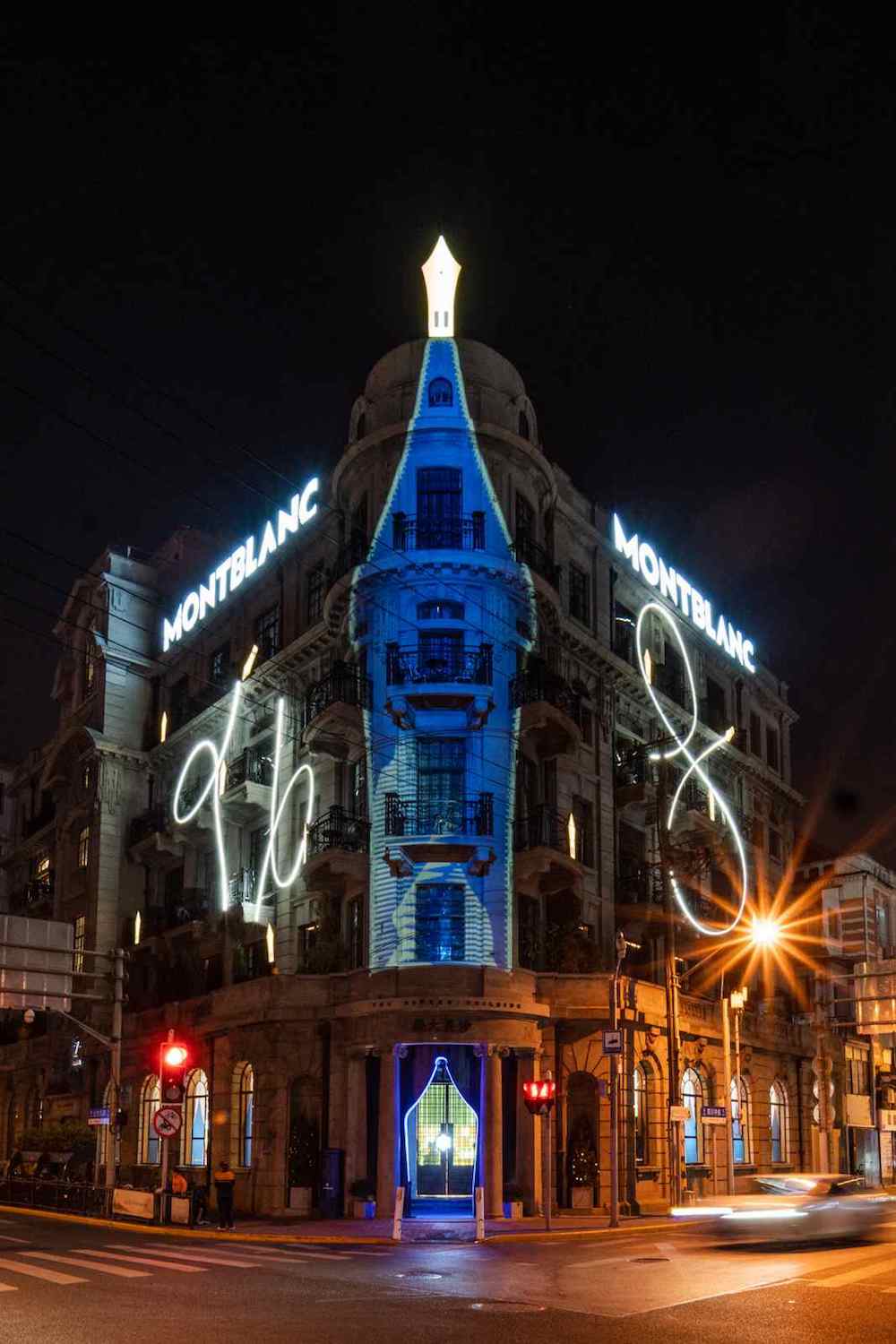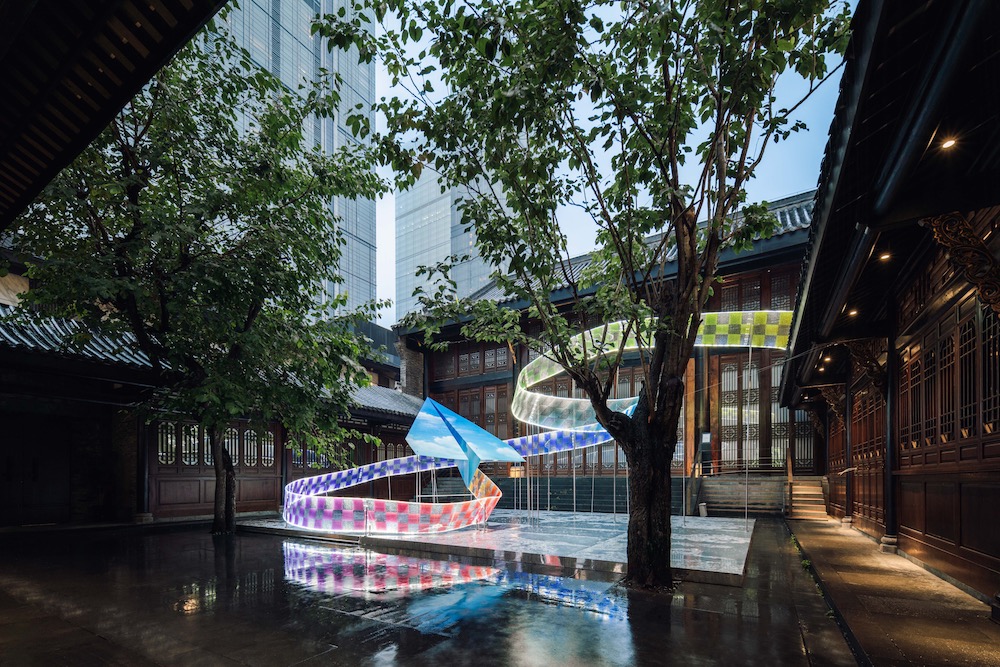The desire to understand each other and maintain growth urges brands to engage in cross-cultural dialogue and exchanges in the Chinese market, while China's active contemporary audience also inspires them with a lot of inspiration and creativity. "In addition to creating local products, reconstructing and presenting fashion shows locally, or creating a scene space with more regional urban history and culture, is becoming one of the international fashion brands' spatial displacement and new narrative methods. 
In order to establish a close relationship with the Chinese market, Prada has presented a number of fashion shows in China: as early as 2011, Prada held the 2012 spring and summer men's and women's fashion shows at the Central Academy of Fine Arts Art Museum in Beijing; At the opening, the 2018 early spring series fashion show was launched simultaneously; in 2019, on the occasion of the 40th anniversary of the establishment of sister cities between Shanghai and Milan, Prada released the world premiere of the 2020 spring and summer menswear series in Shanghai. In September last year, the 2022 spring and summer women's fashion show jointly presented by Miuccia Prada and Raf Simons was staged simultaneously in Milan and Shanghai.
The brand side said, "In the past, we hoped to have a deeper understanding of Chinese culture by carrying out various activities of various sizes. The location of this activity in the Palace of the Kings of Beijing is a manifestation of the spirit of extending the brand."
Beijing County Palace was built in 1648 and was named after the great-grandson of Nurhaci, the founding emperor of the Qing Dynasty, the first Shuncheng County King. In 1994, the mansion was relocated from Xicheng District to the east corner of Chaoyang Park to protect this historic building. The Royal Palace is one of the eight well-preserved Qing Dynasty palaces in the capital, spanning 500 years of history, and it is also the only leisure place open to the public.
In recent years, Prada has performed well in the Chinese market. In March this year, PRADA Group announced its 2021 annual financial report. The group achieved 56% growth in the Chinese market last year, contributing strongly to the market recovery in the Asia-Pacific region.
China is still a key market for luxury brands, but the challenges faced by brands are constantly being refreshed. Luxury goods must continually meet new expectations and preferences of customers. Today’s consumers expect brands to have a deeper connection with Chinese culture, rather than just seeing culture as a marketing tool.
According to the latest "Guochao Brand Young Consumption Insight Report" released by Xinhuanet, among the national tide brand consumption in the whole industry, the "post-90s" and "post-00s" have become the absolute main force, contributing 74% of the national tide consumption.
In fact, the international fashion circle has always lacked Chinese elements, but as the public's attention is diluted by the similar "China" series, more and more consumers question the "Chinese beauty" from a Western perspective, and are disgusted with the stereotyped and crude cultural symbolic marketing . Chinese consumers are more looking forward to the sincerity of the brand's localized narrative.
In addition to integrating classic cultural symbols such as words and images in products, international brands must keep pace with the times to create a relatively fixed and holistic cross-cultural communication space. Beijing's Prince's Mansion and Shanghai's Shamei Building, these landmark buildings with a strong sense of time and the city where they are located have gone through historical ups and downs together, and have become one of the natural links for brands to reach emotional exchanges with consumers in related regions.
Usually, flagship stores located in the commercial centers of key cities are an important way for luxury brands to connect with customers. Therefore, in the past three years, even under the impact of the epidemic, the number and scale of luxury brand flagship stores in Shanghai, Beijing, Chengdu and other places are still increasing, and presenting urban style has become one of the required actions for the localization of international brands.
In June, Bain & Company released the Spring 2022 edition of its luxury industry report: "Luxury Global Market Research 2022: Reimagining the Future." The report believes that Chinese consumer demand remains strong and is likely to lead a recovery in the Chinese personal luxury goods market between late 2022 and early 2023.
With the continuation of the trend of consumer return, the integrated strategy led by the brand headquarters may be replaced by more localized solutions. Understanding the consumer culture of different countries is not easy. How luxury brands continue to update the shape of fashion and effectively convey the god of culture, this is the thinking and challenge faced by the development of "localization" of global luxury brands.

Prada recreates the 2022 fashion show at the Beijing County Palace
On August 5, Prada recreated the 2022 autumn and winter men's and women's fashion show at the Beijing Palace. The Prada Autumn/Winter 2022 men's and women's fashion show was presented by Miuccia Prada and Raf Simons, and debuted in Milan in January and February this year.In order to establish a close relationship with the Chinese market, Prada has presented a number of fashion shows in China: as early as 2011, Prada held the 2012 spring and summer men's and women's fashion shows at the Central Academy of Fine Arts Art Museum in Beijing; At the opening, the 2018 early spring series fashion show was launched simultaneously; in 2019, on the occasion of the 40th anniversary of the establishment of sister cities between Shanghai and Milan, Prada released the world premiere of the 2020 spring and summer menswear series in Shanghai. In September last year, the 2022 spring and summer women's fashion show jointly presented by Miuccia Prada and Raf Simons was staged simultaneously in Milan and Shanghai.

On August 5th, Beijing County Palace Show Field
The fashion show was released in the Yin'an Hall of the Prince's Mansion; the dinner and party after the show were held in the courtyard and gardens of the Prince's Mansion. The overall vision is extended in series by specially designed lighting elements, innovatively interpreting the inspiration of Chinese lanterns. The transparent ceiling and vertical partitions of the three-dimensional triangular space project a warm and soft pink light, which contrasts with the reflection in the pond in the courtyard of the mansion.The brand side said, "In the past, we hoped to have a deeper understanding of Chinese culture by carrying out various activities of various sizes. The location of this activity in the Palace of the Kings of Beijing is a manifestation of the spirit of extending the brand."
Beijing County Palace was built in 1648 and was named after the great-grandson of Nurhaci, the founding emperor of the Qing Dynasty, the first Shuncheng County King. In 1994, the mansion was relocated from Xicheng District to the east corner of Chaoyang Park to protect this historic building. The Royal Palace is one of the eight well-preserved Qing Dynasty palaces in the capital, spanning 500 years of history, and it is also the only leisure place open to the public.
In recent years, Prada has performed well in the Chinese market. In March this year, PRADA Group announced its 2021 annual financial report. The group achieved 56% growth in the Chinese market last year, contributing strongly to the market recovery in the Asia-Pacific region.
China is still a key market for luxury brands, but the challenges faced by brands are constantly being refreshed. Luxury goods must continually meet new expectations and preferences of customers. Today’s consumers expect brands to have a deeper connection with Chinese culture, rather than just seeing culture as a marketing tool.
According to the latest "Guochao Brand Young Consumption Insight Report" released by Xinhuanet, among the national tide brand consumption in the whole industry, the "post-90s" and "post-00s" have become the absolute main force, contributing 74% of the national tide consumption.
In fact, the international fashion circle has always lacked Chinese elements, but as the public's attention is diluted by the similar "China" series, more and more consumers question the "Chinese beauty" from a Western perspective, and are disgusted with the stereotyped and crude cultural symbolic marketing . Chinese consumers are more looking forward to the sincerity of the brand's localized narrative.

Montblanc "Time Post Office" in Shanghai Shamei Building
Brands began to try to find a connection in China's rich cultural heritage. For example, in 2000, Montblanc released a limited-edition series paying tribute to the Great Wall of China; in March this year, Montblanc created a limited-time space with the theme of "Time Post Office" in the Shamei Building in Shanghai, retrospecting Montblanc's 116-year history of development.In addition to integrating classic cultural symbols such as words and images in products, international brands must keep pace with the times to create a relatively fixed and holistic cross-cultural communication space. Beijing's Prince's Mansion and Shanghai's Shamei Building, these landmark buildings with a strong sense of time and the city where they are located have gone through historical ups and downs together, and have become one of the natural links for brands to reach emotional exchanges with consumers in related regions.

Home of Louis Vuitton Chengdu Sino-Ocean Taikoo Li Store
Home of Louis Vuitton Chengdu Sino-Ocean Taikoo Li Store is Louis Vuitton's third Louis Vuitton home in mainland China and its fourth boutique in Chengdu. Louis Vuitton showcases the fusion of art and travel in this new flagship store. "Louis Vuitton Cultural Center" is located in the Guangdong Guild Hall in the center of Sino-Ocean Taikoo Li Chengdu. This open courtyard reflects the historical architectural style of western Sichuan and the beauty of traditional Chinese style, creating a cultural and lifestyle space that integrates local culture and fashionable modernity.Usually, flagship stores located in the commercial centers of key cities are an important way for luxury brands to connect with customers. Therefore, in the past three years, even under the impact of the epidemic, the number and scale of luxury brand flagship stores in Shanghai, Beijing, Chengdu and other places are still increasing, and presenting urban style has become one of the required actions for the localization of international brands.

Hermes Wuhan Plaza 66 Store
As the central city in the central region, Wuhan has always enjoyed the reputation of "the thoroughfare of nine provinces" and has an advantageous geographical location. In July, the Hermès store in Wuhan Plaza 66 was renovated. The new store adheres to the simple and modern style of Hermès, and integrates the concept of Sino-French cultural exchange and the unique geographical environment of Wuhan into the space design. The entire store space is inspired by the continuous mountains with distinct layers, interpreting the "vertical" theme. Following the classic decorative elements of the main store on Boulevard Fubao in Paris, the "Hidden Bookmark" logo on the floor of the store is presented in the form of mosaic. The floor of the store is paved with gentle terrazzo with ochre and brown marble and shimmering fritillary fragments, reminiscent of a galloping river, which is cleverly designed to pay tribute to the Yangtze River flowing through Wuhan.In June, Bain & Company released the Spring 2022 edition of its luxury industry report: "Luxury Global Market Research 2022: Reimagining the Future." The report believes that Chinese consumer demand remains strong and is likely to lead a recovery in the Chinese personal luxury goods market between late 2022 and early 2023.
With the continuation of the trend of consumer return, the integrated strategy led by the brand headquarters may be replaced by more localized solutions. Understanding the consumer culture of different countries is not easy. How luxury brands continue to update the shape of fashion and effectively convey the god of culture, this is the thinking and challenge faced by the development of "localization" of global luxury brands.










Comments